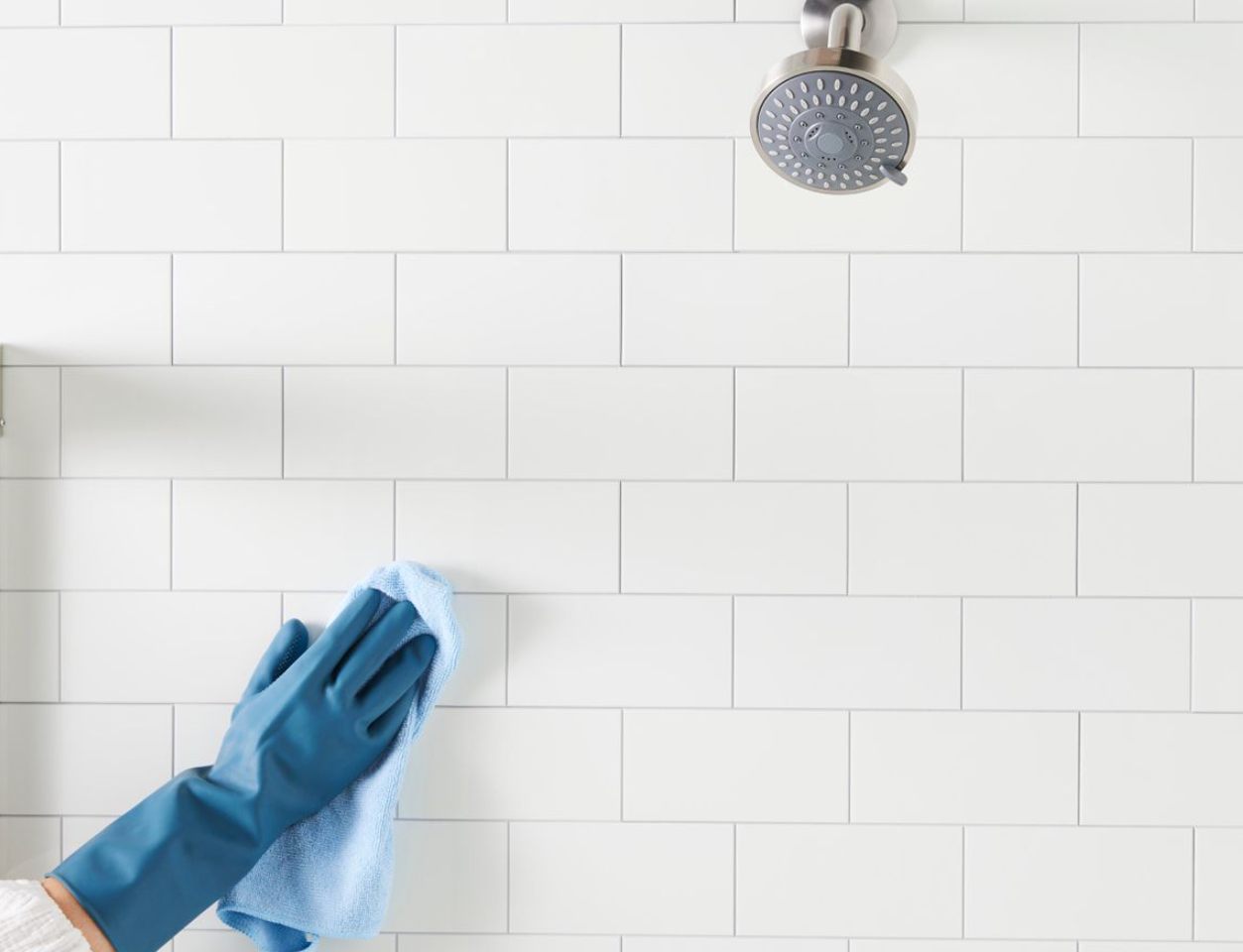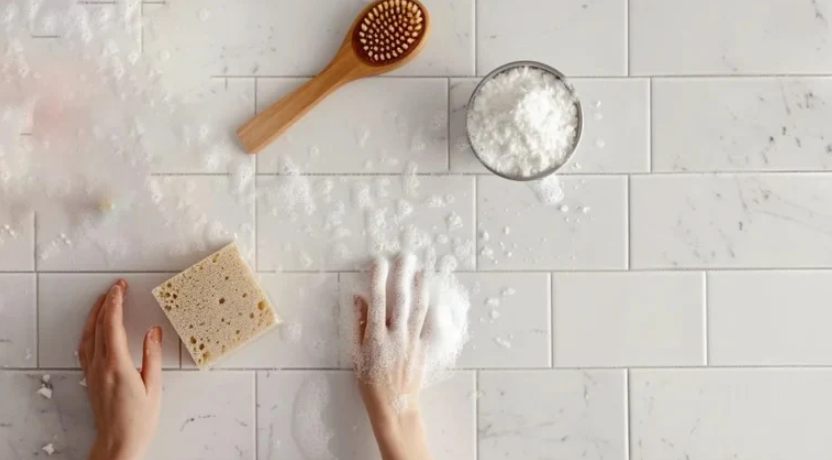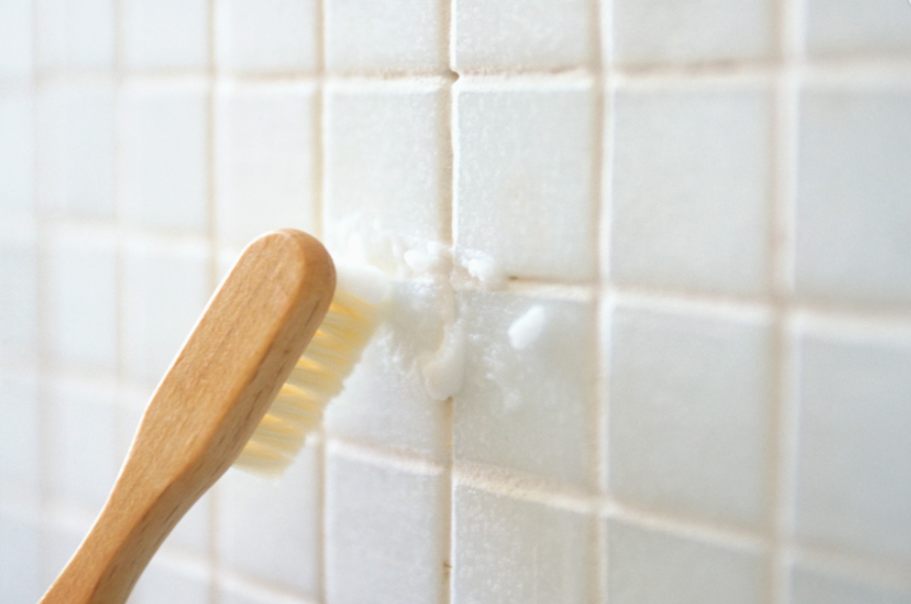Cleaning shower tiles with vinegar and baking soda
Shower tiles cleaning can seem like a difficult chore especially with soap scum, hard water stains, and mildew. You could buy innumerable commercial cleaning products but most of us are turning to natural alternatives such as vinegar and baking soda. These household products are not only inexpensive, they’re also sustainable and do not damage most surfaces. We are going to see how vinegar and baking soda will make a good shower tile cleaner, offer some tips, and give you first-hand experience to get a gleaming shower for you in this essay.

What Vinegar and Baking Soda Really Do – The Truth About Vinegar and Baking Soda.
Vinegar and baking soda are two of the best cleaning products that we have in our house. They work because they’re chemical. Vinegar, which is mainly made up of acetic acid, is a naturally antiseptic and deodorizer. It dissolves mineral deposits (including hard water deposits) and removes mould and mildew. Baking soda (Sodium bicarbonate) is a mild abrasive that is great for cleaning off dirt and grime without scrubbing the floor. ), also kills odours and is a mild bleaching agent.
Vinegar and baking soda when combined will give you a bubbly effect which is good for lifting stains and dirt. The reaction isn’t very cleaning, but because vinegar is acidic and baking soda abrasive, the two can be a formidable combination for shower tile cleaning.
Cleaning Shower Tiles With Vinegar And Baking Soda: Step By Step Instructions.
1. Gather Your Supplies
Make sure you have the following supplies ready before you start:
White vinegar
Baking soda
A spray bottle
A sponge or scrub brush
A microfiber cloth or towel
Warm water
Optional: Essential oils (if you want to add an aroma)

2. Prepare the Cleaning Solution
Spray a spray bottle with white vinegar that’s undiluted. If the vinegar smell bothers you, use a few drops of an essential oil like lemon or lavender to cover it up. Separately, whisk baking soda with a few drops of water to form a paste. It must be a paste that is thick enough to adhere to the tiles, but not soggy.
3. Apply the Baking Soda Paste
Spray baking soda paste onto shower tiles with a sponge or your fingers on any areas where you have accumulation, like around the grout or at the corners. Let the paste sit for 5-10 minutes to break through the dirt.
4. Spray with Vinegar
After the baking soda has been working for a while, spray the tiles with some vinegar. There’ll be a bubbling response that pulls up mud and grime. Allow the mash to rest for 10-15 minutes more.

5. Scrub and Rinse
Scrub the tiles using a sponge or a scrub brush in circular motions. Attention to grout lines in particular as this area catches the most dirt. When you have scrubbing the entire surface, flush off with warm water. Scrub any leftover dirt with a microfiber towel and polish the tiles.
Ethan Caldwell, as the author of this article and a home management expert, says :
Test On A Small Area: Vinegar and baking soda is relatively safe for most surfaces, but always make sure you try the solution on a small, invisible spot to make sure it doesn’t damage or discolor it.
Rinse with Warm Water: Warm water dissolves soap scum and hard water stains better than cold water so you can wash off the cleaning solution faster.
Avoid streaks: To prevent streaks, dry the tiles with a dry microfiber towel after you rinse. It also avoids water spots if you have hard water.
Daily Cleaning: For the best results in shower tiles, keep cleaning. You can deep clean and avoid the accumulation by cleaning with vinegar once every week.
Ventilate the Bathroom: When cleaning, open a window or use the exhaust fan to ventilate. It also helps release the vinegar’s powerful smell and keeps moisture out which can breed mold.
You can also read these articles on our website:
- Top tips for cleaning and maintaining wooden furniture at home
- How do I keep my stainless steel sink spotless ?
From My Own Experience With Vinegar And Baking Soda.
In my own house, I have encountered stubborn soap scale and mould in the shower. I’ve tried commercial cleaners and none did the job — they left behind a strong chemical odour or didn’t clean everything up. Frustrated, I tried vinegar and baking soda. The results were impressive. Then I put the baking soda paste on and sprayed it with vinegar and within minutes the dirt had started to lift. Scrubbing was quicker and tiles were cleaner. It was what I liked most about not using chemicals and knowing I was using a natural product.
There were issues like the grout lines which were gray. The vinegar and baking soda combination worked, but a bit more work was needed to restore the grout’s colour. Over time, I have never noticed the grout turning black again after washing it regularly with vinegar.
Addressing Common Concerns
1. Will Vinegar Damage Grout?
Acidic: Vinegar will damage natural stone or unsealed grout when used too long. Vinegar is typically OK to use if you sealed your grout. But if you have unsealed grout or tiles made from natural stones, make sure to dilute the vinegar with water or a cleaner that is gentler.
2. Is Baking Soda Too Abrasive?
Baking soda is a gentle cleaner and won’t harm most tile surfaces. But for soft or glistening tiles, try a soft sponge or cloth so as not to scratch it.
3. What Is The Proper Number Of Times I Should Clean With Vinegar And Baking Soda?
Vinegar and baking soda once per week is enough for most common cleaning. Once a month or periodically can be used to deep clean.
Environmental and Health Benefits
It’s all because vinegar and baking soda are eco-friendly and healthful. They’re non-toxic and biodegradable unlike many store-bought cleaners. So they are ideal for homes with children, pets or people who have allergies or sensitivities. They are also cheap and accessible, meaning you don’t have to invest in a bunch of different cleaning products.
1. The Science Behind Vinegar and Baking Soda
Vinegar (acetic acid) and baking soda (sodium bicarbonate) are a powerful cleaning duo due to their chemical reaction. When combined, they create carbon dioxide bubbles, which help lift dirt and grime from surfaces. Vinegar’s acidity breaks down mineral deposits and soap scum, while baking soda acts as a gentle abrasive to scrub away stains without damaging tiles. This natural combination is effective, eco-friendly, and safe for most tile types.
2. How to Tackle Stubborn Mold on Shower Tiles
For moldy areas, create a paste using baking soda and water. Apply it to the affected spots and spray vinegar over it. Let it sit for 15-20 minutes, then scrub with a brush. For extra stubborn mold, add a few drops of tea tree oil, a natural antifungal agent, to the mixture.
3. Cleaning Grout with Vinegar and Baking Soda
Grout can be tricky to clean, but this method works wonders:
Mix baking soda with water to form a thick paste.
Apply the paste to the grout lines using a toothbrush or small brush.
Spray vinegar over the paste and let it fizz for 10 minutes.
Scrub the grout lines thoroughly and rinse with water.
4. When to Use Alternative Cleaners
While vinegar and baking soda are versatile, they may not be suitable for all tile types. Avoid using vinegar on natural stone tiles like marble or granite, as the acid can etch the surface. For these materials, opt for pH-neutral cleaners or consult a professional.
5. Troubleshooting Common Issues
Residue Left Behind: If you notice a white residue after cleaning, rinse the area with warm water and wipe it dry with a microfiber cloth.
Ineffective on Tough Stains: For stubborn stains, try hydrogen peroxide or a commercial cleaner designed for tiles.
Unpleasant Smell: Add a few drops of essential oil (e.g., lemon or lavender) to the vinegar solution for a fresh scent.
FAQs
Q: Can vinegar and baking soda damage tiles?
A: Vinegar and baking soda are safe for most ceramic and porcelain tiles. However, avoid using vinegar on natural stone tiles, as it can cause etching.
Q: How often should I clean my shower tiles with this method?
A: For routine maintenance, clean your tiles once a week. For deep cleaning, use this method monthly.
Q: Can I use this method on colored grout?
A: Yes, but test it on a small, inconspicuous area first to ensure it doesn’t affect the color.
Article source:
